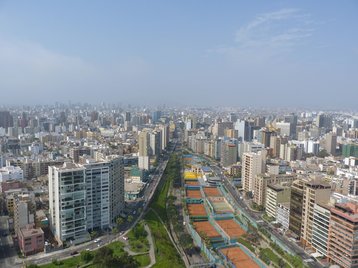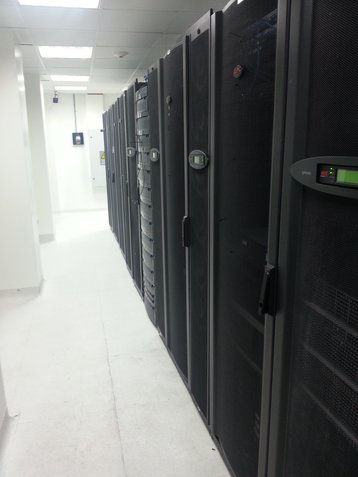Even during the global recession, Latin America grew, and Peru emerged as one of its hotspots. According to LatinFocus, Peru is expected to lead the region until 2018, with an economic growth rate of 5.4 percent.
IT investment and infrastructure construction are accelerating even faster. The Chilean telecommunications company Entel reports that data center services are growing at 20 percent year-on-year.
Public data centers lag behind
Despite this, Peruvian public sector data centers are lagging. Like Peru’s famous llamas, they are determined but not terribly efficient for modern practices. “Implementing data centers is a priority for the state, because the current facilities have serious shortcomings in terms of quality, performance, backup and redundancy,” says Juan Dextre, CEO of data center design firm Goals.
Peru’s government has a multitude of data centers, as each institution usually runs its own servers, mostly in small facilities with about 40 to 60 square meters of space and 30 to 250kW total power capacity.
The physical space limits their upgrade options, and these data centers are often on raised floors that are not designed to support the weight of denser racks. “It’s a challenge, because institutions have no other physical space,” explains Rocio Alberca, CEO of Critical Solutions. It is very difficult to migrate to new technology in a small space when your data center must keep working. These facilities suffer from bad design, neglecting efficient cooling and monitoring.
Around 2012, the government kicked off a $155m National Peruvian State Data Center project, intended to centralize government data processing and create a huge private cloud.
National state data centers
Two 10,000-square meter data centers were planned: one in Lima, with a back up in La Libertad. These were supposed to be built within 24 months, but the last change of government stalled the project, and that blockage is holding up other work, says Juvenal Arellano, data center manager at CIME.
Despite this, the project has had some results. It has improved networking by developing a fiber optic backbone linking Peru’s provincial capitals, and promoted broadband.
There are some government projects adopting best practices, in particular small ones. For instance, since 2012, state telecoms regulator Osiptel has built a server room in San Borja, Lima, to replace an outmoded facility with no access control and an unstable power supply (see box, right).
“We had a server room that did not meet best practices,” says Freddy Alvarado, IT manager for Osiptel. “Now we have become a benchmark within the public sector in modern data centers.”
New data centers have been built for the Ministry of the Interior, Ministry of Agriculture, the Instituto del Mar del Peru (IMARPE or Peruvian Sea Institute) and the judiciary, which has an 80 square meter modular data center that has made a 40 percent power saving.
The latest government data centers already “consider using row cooling and water cooling, fire-suppression systems that do not alter the ozone layer, and the installation of DCIM tools,” says Dextre.
Alberca agrees, saying: “They are beginning to use the latest technologies.”
Aisle containment
Gradually, government facilities are applying aisle containment, monitoring inlet air, and letting IT gear run at higher temperatures, but Arellano says bureaucracy sometimes delays these changes.
This year will be a big year, with several government data centers coming on stream. The National Customs and Tax Administration (Sunat) is renovating and building two data centers: it is remodeling a center at Miraflores, using a modular system certified to the EN1047-2 standard.
The National Bank is turning its existing 400 square meter data center into a backup site, and is due to open a new 700 square meter facility in 2015 that will use 20 percent less energy, according to engineering contractor Cosapi Data.
A new convention center in Lima is being built by OAS and Italtel in the district of San Borja. Due to open its doors in mid-2015, the 10,684 square meter building will have four levels of basement and four auditoriums – and include two Tier III data centers, each operating at 150kVA.
There will be other buildings alongside these. There is still a lot to do, because “the government is just learning the importance of information and protection of equipment,” says Alberca. Future projects are likely to be small, between 40 and 250kW – and the public sector will have to improve its record of building alternate sites. At present, projects tend to focus on building a main data center (with a high concentration of these in the city of Lima).
Central government will play an important role, but it still has a long road ahead. It must promote laws that encourage better data center construction, siting them better to make use of free cooling.
Stay tuned. It may not be long before the stalled National Data Center of Peru comes into being!
DCD Converged Peru is at the Westin Lima, 7 July 2015
This article appeared in the April 2015 issue of DatacenterDynamics magazine
For more Latin American data center news, read our Spanish language site www.datacenterdynamics.es


